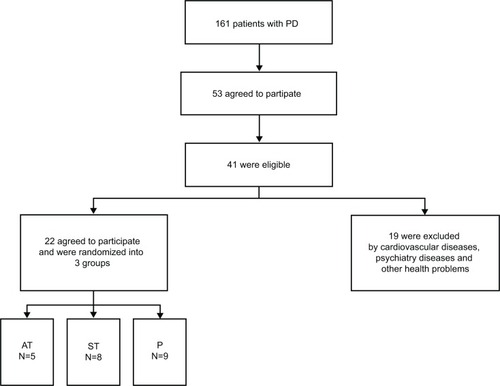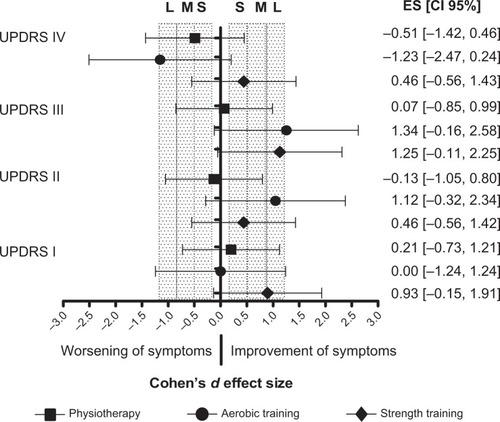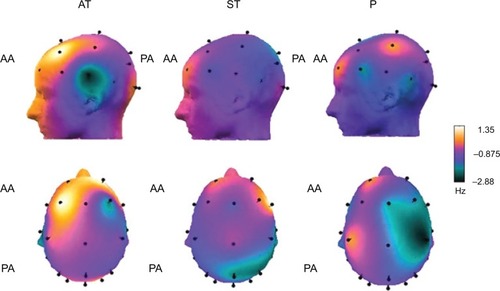Figures & data
Table 1 Descriptive analysis of the three groups (physiotherapy [P], aerobic training [AT], and strength training [ST]) at baseline
Figure 1 Flow diagram for identification of eligible patients.

Table 2 Comparison of symptoms of Parkinson’s disease and functional capacity (pre and post) of aerobic training, strength training, and physiotherapy
Figure 2 Effect size (ES) of symptoms of Parkinson’s disease.


